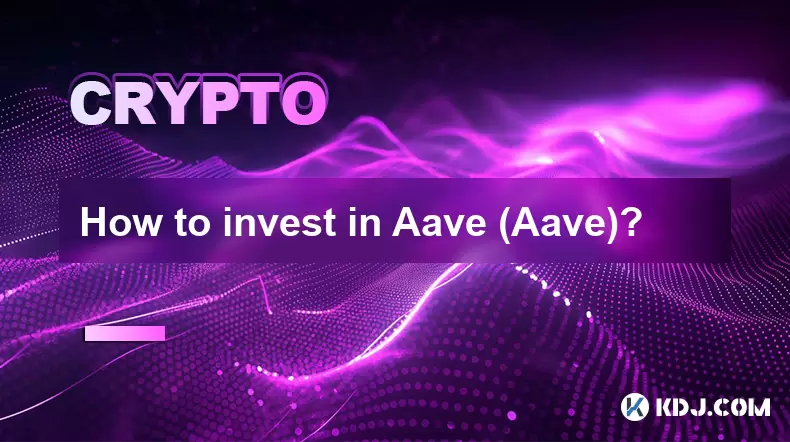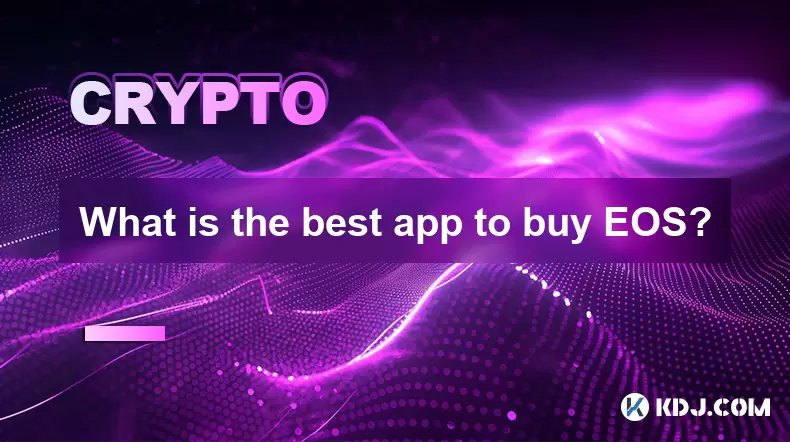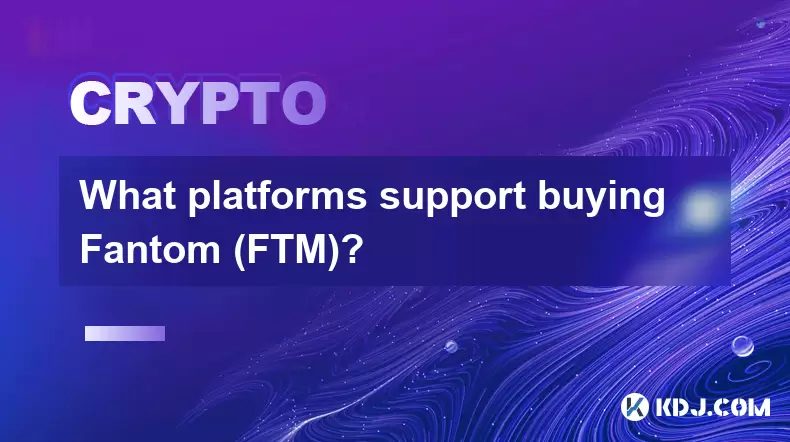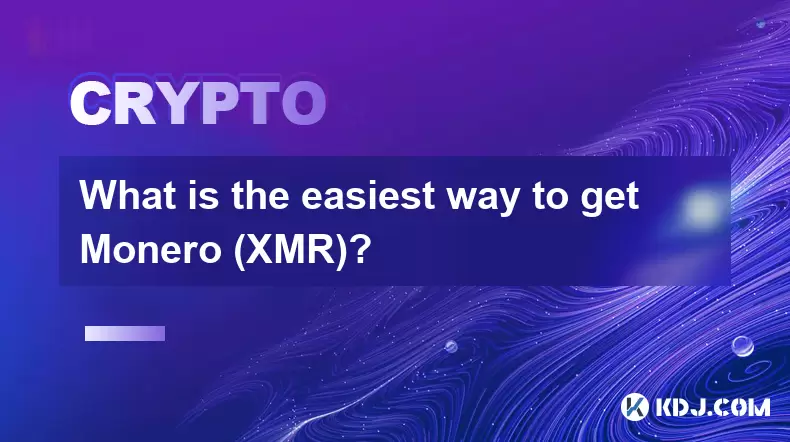-
 Bitcoin
Bitcoin $117400
1.88% -
 Ethereum
Ethereum $3867
5.29% -
 XRP
XRP $3.081
2.58% -
 Tether USDt
Tether USDt $1.000
0.03% -
 BNB
BNB $779.7
0.92% -
 Solana
Solana $171.8
2.11% -
 USDC
USDC $0.9999
0.01% -
 Dogecoin
Dogecoin $0.2172
5.80% -
 TRON
TRON $0.3413
1.41% -
 Cardano
Cardano $0.7641
3.06% -
 Hyperliquid
Hyperliquid $39.69
3.62% -
 Sui
Sui $3.731
6.73% -
 Stellar
Stellar $0.4125
3.55% -
 Chainlink
Chainlink $18.23
8.86% -
 Bitcoin Cash
Bitcoin Cash $579.5
1.41% -
 Hedera
Hedera $0.2538
4.02% -
 Ethena USDe
Ethena USDe $1.001
0.00% -
 Avalanche
Avalanche $22.81
2.82% -
 Litecoin
Litecoin $121.7
1.10% -
 UNUS SED LEO
UNUS SED LEO $8.962
-0.33% -
 Toncoin
Toncoin $3.324
2.94% -
 Shiba Inu
Shiba Inu $0.00001263
2.30% -
 Uniswap
Uniswap $10.24
4.95% -
 Polkadot
Polkadot $3.780
3.09% -
 Dai
Dai $1.000
0.03% -
 Bitget Token
Bitget Token $4.432
1.64% -
 Cronos
Cronos $0.1493
3.87% -
 Monero
Monero $256.7
-9.05% -
 Pepe
Pepe $0.00001092
3.99% -
 Aave
Aave $279.0
6.11%
How to invest in Aave (Aave)?
Aave (AAVE) is a leading DeFi protocol enabling lending, borrowing, and earning interest across multiple blockchains, with AAVE serving as a governance and security token.
Aug 08, 2025 at 01:07 am

Understanding Aave (AAVE) and Its Role in DeFi
Aave is a decentralized finance (DeFi) protocol that enables users to lend, borrow, and earn interest on cryptocurrency assets without intermediaries. Originally launched as ETHLend in 2017, it rebranded to Aave in 2020 and introduced innovative features such as flash loans and variable and stable interest rates. The native token, AAVE, plays a crucial role in governance and security within the ecosystem. Holders can participate in voting on protocol upgrades and risk parameters, making it a governance token. Additionally, AAVE is used as a safety mechanism through the Safety Module, where users can stake AAVE to back the protocol in case of shortfalls, earning rewards in return.
The protocol operates on Ethereum and multiple Layer 2 networks and EVM-compatible blockchains such as Polygon, Avalanche, and Fantom, increasing accessibility and reducing transaction costs. This multi-chain presence allows investors to interact with Aave across different ecosystems, enhancing liquidity and usability. Understanding that AAVE is not just a speculative asset but a functional token within a live financial infrastructure is essential for anyone considering investment.
Setting Up a Non-Custodial Wallet
To invest in AAVE, you must first set up a non-custodial cryptocurrency wallet that supports Ethereum and ERC-20 tokens. Recommended wallets include MetaMask, Trust Wallet, and Coinbase Wallet. These wallets give you full control over your private keys, ensuring that only you can access your funds.
- Download the wallet application from the official website or app store
- Create a new wallet and securely back up the recovery phrase—this is critical and should never be shared or stored digitally
- Ensure the wallet network is set to Ethereum Mainnet (or the relevant chain where AAVE is traded)
- Verify the wallet address by sending a small test transaction before depositing larger amounts
Once the wallet is configured, you can proceed to connect it to exchanges or DeFi platforms where AAVE is available. Always double-check URLs to avoid phishing sites when interacting with wallet-connected services.
Buying AAVE on Centralized Exchanges
The most straightforward way to acquire AAVE is through centralized cryptocurrency exchanges (CEXs). Popular platforms such as Binance, Coinbase, Kraken, and KuCoin list AAVE against major pairs like USDT, USD, and ETH.
- Register and complete identity verification (KYC) on your chosen exchange
- Deposit fiat currency (USD, EUR, etc.) using bank transfer, debit card, or other supported methods
- Navigate to the AAVE trading pair (e.g., AAVE/USDT)
- Place a market order to buy AAVE at the current price or a limit order to set your desired price
- Confirm the transaction and wait for the AAVE tokens to appear in your exchange wallet
After purchasing, it is strongly advised to withdraw AAVE to your non-custodial wallet rather than leaving it on the exchange. This reduces the risk of loss due to exchange hacks or operational failures.
Staking AAVE in the Safety Module
One unique investment opportunity with AAVE is staking in the Safety Module. This feature allows users to deposit AAVE as a backstop for the protocol’s reserves. In the unlikely event of a shortfall in collateral, staked AAVE can be slashed to cover losses, but in return, participants earn staking rewards in AAVE and other incentives.
To stake AAVE:
- Visit the official Aave app interface at app.aave.com
- Connect your wallet (e.g., MetaMask) to the platform
- Navigate to the "Stake" section under the Governance tab
- Select "Stake AAVE" and enter the amount you wish to deposit
- Approve the transaction and confirm the staking action via your wallet
- You will receive stkAAVE tokens in return, representing your staked position and accruing rewards over time
Rewards can be claimed periodically, and stkAAVE can be unstaked after a 48-hour cooldown period. This adds a layer of long-term commitment but offers enhanced yield for risk-tolerant investors.
Earning Yield by Providing Liquidity
Another way to invest in Aave is by supplying assets to its lending pools. While this doesn’t involve buying AAVE directly, it integrates you into the Aave ecosystem and allows you to earn passive income, which can be reinvested into AAVE.
- Connect your wallet to app.aave.com
- Select the "Deposit" tab and choose a supported asset (e.g., DAI, USDC, ETH)
- Enter the amount you wish to deposit and confirm the transaction
- You will receive aToken (e.g., aDAI, aUSDC) in return, which accrue interest in real time
- Interest is compounded automatically and can be withdrawn at any time
The interest rates are determined by supply and demand dynamics within each market. Monitoring utilization rates and borrowing demand can help optimize returns. Some users choose to reinvest earned yields into AAVE tokens to compound their exposure to the protocol’s growth.
Risks and Security Considerations
Investing in AAVE, like any cryptocurrency, carries inherent risks. Smart contract vulnerabilities, though audited, remain a concern. The Aave protocol has undergone multiple audits by firms like Trail of Bits and Quantstamp, but no system is immune to exploits. Users must also be cautious of impermanent loss if providing liquidity indirectly, and market volatility can significantly affect AAVE’s price.
Phishing attacks are common. Always verify the official Aave domain (aave.com) and avoid clicking on suspicious links. Enable two-factor authentication (2FA) on exchanges and use hardware wallets for large holdings. Never share private keys or recovery phrases.
Frequently Asked Questions
Can I buy AAVE with a credit card?
Yes, several exchanges including Coinbase, Binance, and Kraken allow users to purchase AAVE directly with a credit card. After completing identity verification, select the AAVE/fiat trading pair and choose "Credit/Debit Card" as the payment method. Be aware of higher fees compared to bank transfers.
What is the difference between AAVE and stkAAVE?
AAVE is the native governance token. stkAAVE is a rebasing token received when staking AAVE in the Safety Module. It represents a claim on the staked AAVE and accumulates rewards. The balance of stkAAVE increases over time due to reward accrual, unlike standard AAVE.
Is Aave available on mobile devices?
Yes, you can interact with Aave using mobile wallets like MetaMask Mobile or Trust Wallet. Access the Aave app through the browser within the wallet app. Some centralized exchanges also offer AAVE trading via their mobile apps.
How often are Aave governance proposals submitted?
Governance proposals are submitted irregularly by AAVE token holders who meet the minimum threshold. Active participants can view upcoming and ongoing proposals on the Aave Governance Dashboard. Voting power is proportional to the amount of AAVE held and delegated.
Disclaimer:info@kdj.com
The information provided is not trading advice. kdj.com does not assume any responsibility for any investments made based on the information provided in this article. Cryptocurrencies are highly volatile and it is highly recommended that you invest with caution after thorough research!
If you believe that the content used on this website infringes your copyright, please contact us immediately (info@kdj.com) and we will delete it promptly.
- Pi Coin's dApp and AI Potential: Building a Decentralized Future
- 2025-08-08 02:30:12
- Ruvi AI Takes the Lead: Outshining Dogecoin on CoinMarketCap
- 2025-08-08 02:50:12
- Cryptos Under $1: Is Ripple Still the King?
- 2025-08-08 03:50:12
- Cold Wallet, Bonk Price, ICP Price: Navigating the Crypto Landscape in 2025
- 2025-08-08 03:56:12
- Memecoins, Low-Cap Gems, and the Hunt for 10,000x Gains: What's Next?
- 2025-08-08 02:50:12
- Bitcoin, Greenidge, and Liquidity: Navigating the Crypto Currents in NYC
- 2025-08-08 02:30:12
Related knowledge

Where can I buy UMA (UMA)?
Aug 07,2025 at 06:42pm
Understanding UMA and Its Role in Decentralized FinanceUMA (Universal Market Access) is an Ethereum-based decentralized finance (DeFi) protocol design...

What exchanges support buying IOTA (MIOTA)?
Aug 07,2025 at 09:58pm
Understanding the Role of Private Keys in Cryptocurrency SecurityIn the world of cryptocurrency, private keys are the cornerstone of ownership and con...

What is the best app to buy EOS?
Aug 07,2025 at 04:35pm
Understanding EOS and Its Role in the Cryptocurrency EcosystemEOS is a blockchain platform designed to support decentralized applications (dApps) with...

What platforms support buying Fantom (FTM)?
Aug 08,2025 at 01:56am
Overview of Fantom (FTM) and Its EcosystemFantom (FTM) is a high-performance, scalable, and secure layer-1 blockchain designed to overcome the limitat...

How to invest in Aave (Aave)?
Aug 08,2025 at 01:07am
Understanding Aave (AAVE) and Its Role in DeFiAave is a decentralized finance (DeFi) protocol that enables users to lend, borrow, and earn interest on...

What is the easiest way to get Monero (XMR)?
Aug 08,2025 at 02:56am
Understanding Monero (XMR) and Its Privacy FeaturesMonero (XMR) is a privacy-focused cryptocurrency that ensures complete anonymity in transactions th...

Where can I buy UMA (UMA)?
Aug 07,2025 at 06:42pm
Understanding UMA and Its Role in Decentralized FinanceUMA (Universal Market Access) is an Ethereum-based decentralized finance (DeFi) protocol design...

What exchanges support buying IOTA (MIOTA)?
Aug 07,2025 at 09:58pm
Understanding the Role of Private Keys in Cryptocurrency SecurityIn the world of cryptocurrency, private keys are the cornerstone of ownership and con...

What is the best app to buy EOS?
Aug 07,2025 at 04:35pm
Understanding EOS and Its Role in the Cryptocurrency EcosystemEOS is a blockchain platform designed to support decentralized applications (dApps) with...

What platforms support buying Fantom (FTM)?
Aug 08,2025 at 01:56am
Overview of Fantom (FTM) and Its EcosystemFantom (FTM) is a high-performance, scalable, and secure layer-1 blockchain designed to overcome the limitat...

How to invest in Aave (Aave)?
Aug 08,2025 at 01:07am
Understanding Aave (AAVE) and Its Role in DeFiAave is a decentralized finance (DeFi) protocol that enables users to lend, borrow, and earn interest on...

What is the easiest way to get Monero (XMR)?
Aug 08,2025 at 02:56am
Understanding Monero (XMR) and Its Privacy FeaturesMonero (XMR) is a privacy-focused cryptocurrency that ensures complete anonymity in transactions th...
See all articles

























































































